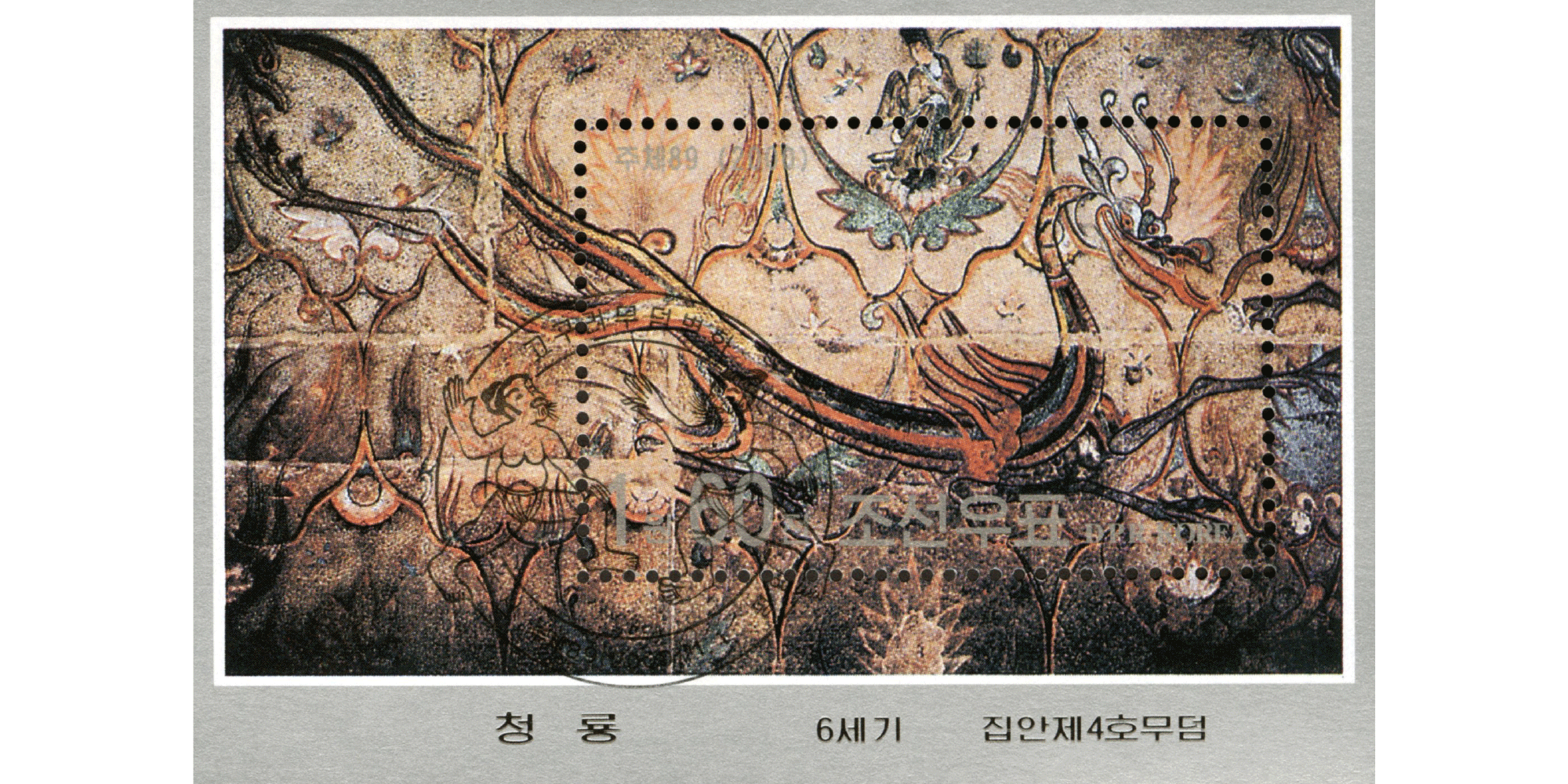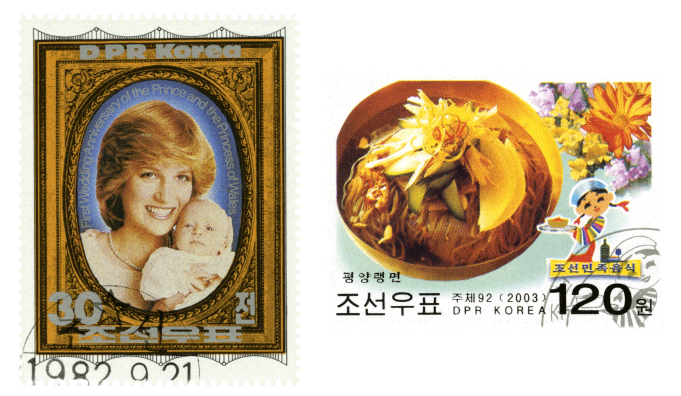
A serpentine blue-and-orange dragon with frog legs—one of four guardian deities representing the cardinal directions—adorns a 2000 stamp; the dragon is part of a sixth-century tomb painting from Korea’s Goguryeo kingdom. The painting is evidence of close artistic ties between Korea and China. (University of Chicago Library East Asian Collection and Visual Resources Center)
Postage stamps from North Korea afford a rare glimpse into a reclusive country.
When the Democratic People’s Republic of Korea was established in 1948, separating itself from the southern part of the Korean peninsula, its citizens lost most of their access to the rest of the world. At the same time, those outside the borders were shut out from the sights and sounds of North Korea.
The University of Chicago Library’s recently acquired collection of North Korean stamps—the largest such collection in North America—opens the window just a crack.
A few years ago Korean studies librarian Jee-Young Park was collecting books and periodicals from North Korea, much of them poorly reproduced, when she came across some books of stamps in good condition, with bright, clear images. She tracked down more from dealers in China and a private collector in Germany, ultimately finding more than 2,000 stamps for the library.

North Korea issued its first stamps for postal use in 1946, but after 1970 it started to produce more for export to Asian and European countries. Park, who grew up in South Korea, was expecting the stamps to be political in nature, and many of them are, emphasizing the country’s leaders, flags, and patriotic songs. But some of them also suggest everyday interests not so different from those of South Koreans.
One series features traditional foods including kimchi and a cold noodle dish called P’yŏngyang naengmyŏn. Many stamps focus on Korean arts: celadon pottery, musical instruments, and portraits of famous artists. There are tourist sites like Mount Kumgang—especially meaningful for Koreans who emigrated and can no longer visit. There are scores of animal stamps, including a series done in collaboration with the World Wildlife Fund, depicting endangered species like the Amur leopard and the black-faced spoonbill.
Western imagery shows up too: soccer’s World Cup trophy, Italian Renaissance art, and Britain’s Princess Diana. Park says the Diana stamps may reflect interest in world cultures and events despite the country’s insular reputation—or just recognition of what would sell in the early 1980s.
With material directly from North Korea in short supply, even the information on a tiny stamp has value to researchers, Park says. “A stamp is a kind of means to show yourself to the outside world,” and these examples provide evidence of how the country strove to represent itself to an international audience—fulfilling what the collection website calls “a dual commercial and propagandistic function as an instrument for the transmission of popular culture and national identity.”
